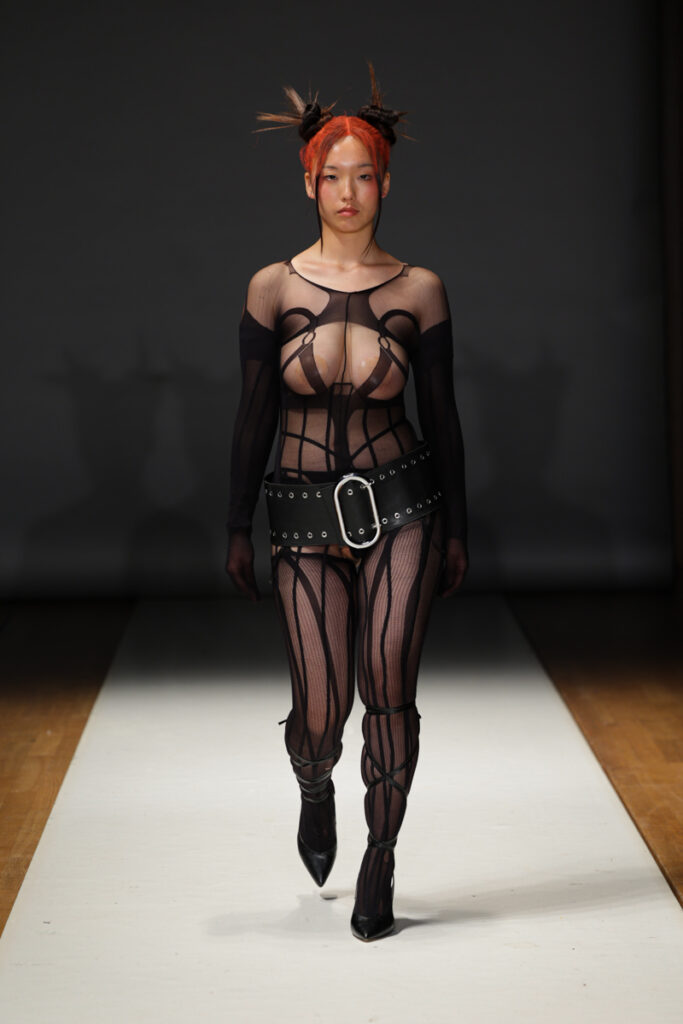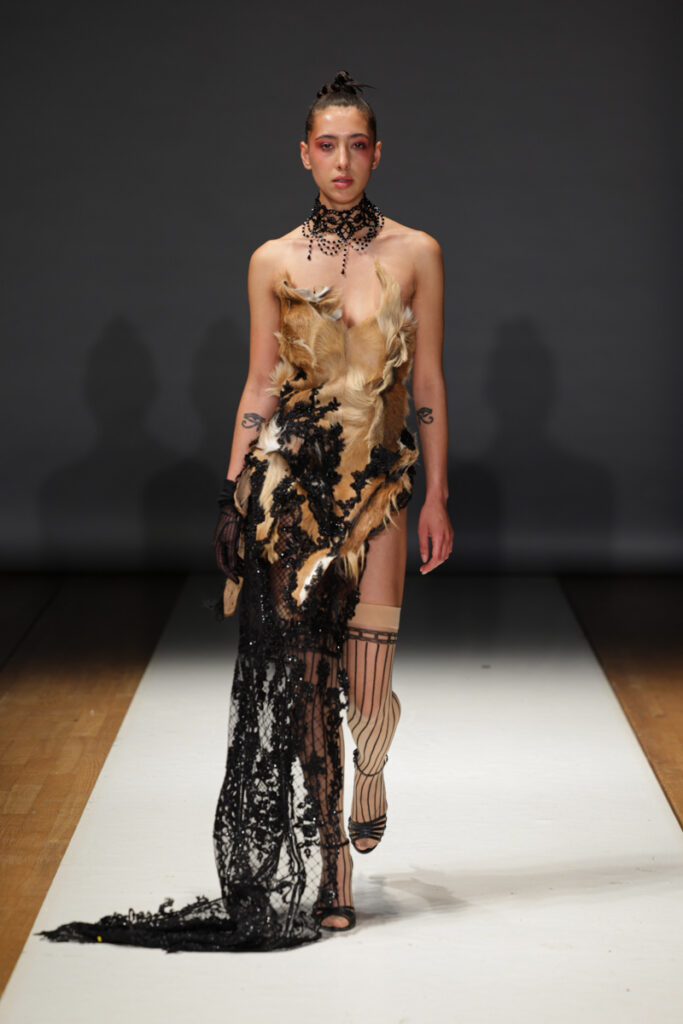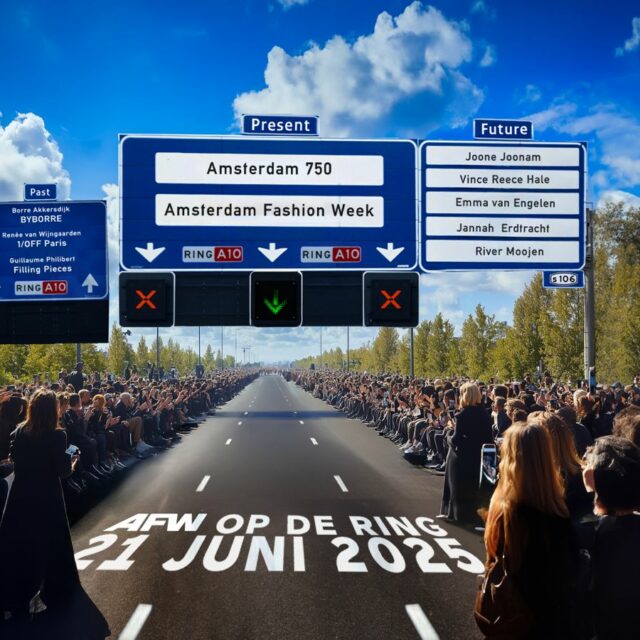After receiving an abundant amount of open call applications, the Lichting jury announced their selection of 10 final candidates that will be competing against each other for the Lichting 2023 title. Before their debut to the public during Amsterdam Fashion Week Edition 2023, AFW sat down with each participant to talk about their collection and their plans for the upcoming Lichting show. This week we would like to introduce you to Yousra Razine Mahrah.
Can you tell me something about yourself and your trajectory as a fashion student?
Fashion has always been a form of expression for me, I’ve actually had quite little affinity with the latest trends in fashion or affinity with the big fashion houses. For me it is purely an outlet, something I can be free in. Fashion is an area in which you are not looked at strangely, something that I miss within my Moroccan community, which can often be judgmental towards each other or towards the outside world. I keep myself separate from them in that regard, by doing and wearing what attracts me, without nailing myself to what a typical Moroccan girl in the Netherlands would actually wear. For that matter, you could consider me as the black sheep within my community, which I actually learned to accept from an early age. Using fashion as an outlet was something that sparked during secondary school, and continued to develop after high school, when I went to ROC Hilversum to study Fashion Custom Clothing and Menswear and Tailoring. Eventually, I got my diploma and rolled into the ArtEZ Fashion Desing Bachelor. Within ArtEZ I created my handwriting as a designer!
How did the concept of your graduation collection come to being?
The starting point of my collection was my personal struggle in regards to growing up in a strict household. I infused four different worlds into my collection that are related to me personally as a Moroccan woman. How I dress myself, which is not accepted within my Islamic belief, how my parents would like to see me, which is more concealed, how the Berber folklore people in Morocco dress themselves, in animal skins. Lastly, the stereotypical way of dressing within the Moroccan street youth community. During my process, I was trying to find and play with the boundaries in between these worlds and melt them together to create a new image. To come up with certain forms and shapes, I started with lingerie pieces that were a couple sizes down from my own body, this to create tension and more volume in certain areas. I am someone who delves into the making process straight away. This allows me to feel closer to the process since I am using my own body throughout the development of the design. I also draped every little piece of my collection from doll to garment using fibrefill to create interesting shapes, and used moulages that I did on my own body to create new forms.

What important themes do you address with your collection?
Restriction, family, body inclusivity, culture (clashes). My work is signified by my search to ways in which I can push boundaries to their fullest extent.
How would you describe your signature as a designer? How does this reflect in your collection?
I am not afraid. Not afraid to combine materials or concepts or ideas that aren’t really in the same world(s). I love to combine materials that don’t necessarily match with each other but still make it work at the end. This is also because I am a person that navigates within worlds that are clashing against each other and I am standing in the middle of it trying to make it work.
Which piece from the collection are you most proud of? Why?
The first look of the collection, which is the Moroccan leather goat skin dress with handcrafted embroidered lace. This look represents my concept the best. You have the very sturdy Moroccan goat skin which is a very hard material, combined with a very delicate handcrafted embroidered lace. Combining these two was a process in itself, since they are two opposite materials in regards to hardness and softness, so in the making process it also felt heavy blending these together, and that feeling kind of reflected to what my collection is about.

What would be the ideal way to present your collection to the public in September? Can you already say something about what you currently have in mind?
A full-on fashion show with five carefully selected models that represent my story alongside my designs.





